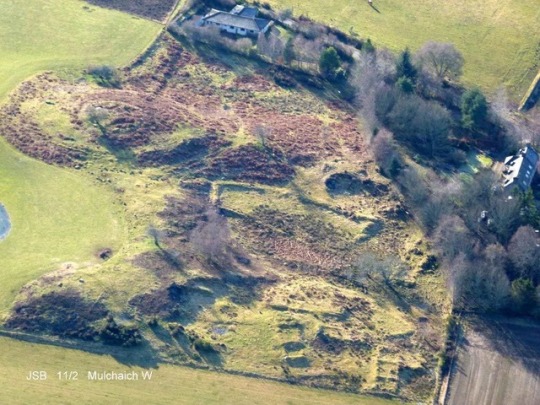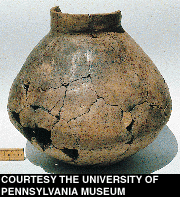Link
Bottle Colors- Are they important? What does your color mean? Can you tell what your bottle may have been solely based off of color? Color can be a GREAT indictor in narrowing down what your glass may have been used for!
2 notes
·
View notes
Video
vimeo
Whiskey, the way George Washington would’ve done it.
(Shout out to Professor Seifert!)
0 notes
Text
Recreating Humanity’s Favorite Past Time, One Beer at a Time- Jake Knudsen




0 notes
Text
A Scientific Study on the Culture of America’s Craft Beer Consumers: An Ethnography by Jake Knudsen



0 notes
Link
"As a symbol of the Barbadian sugar revolution and a product of early British colonialism in the New World, St. Nicholas Abbey’s historical significance transcends the physical boundaries of Barbados. Archaeological investigations are beginning to shed new light on St. Nicholas Abbey’s prominent role in the emerging Atlantic world. The site is well preserved and archaeological deposits are largely intact" St. Nicholas Abbey was one of the largest and most prominent sugar plantations in the world during the 1700-1800s and in turn, one of the largest Rum producers of the time. After partnering with the College of William and Mary, St. Nicholas Abbey has been able to begin the proper steps in regards to preservation, restoration, and recovery.
0 notes
Video
youtube
Documentary on the roots of whiskey, reflects on some awesome old ways of distilling alcohol.
0 notes
Photo

1600 year old wine press found in a Jerusalem army base, 2016. http://www.timesofisrael.com/1600-year-old-wine-press-found-in-old-jerusalem-army-base/
0 notes
Text
http://www.discus.org
The Distilled Spirits Council of the United States may be on of the most important governing bodies towards alcoholic legislature. Not only do they create laws that pertain to alcohol and sales in the US, they also have one of the largest bodies of history of distilled spirits with artifacts and articles all the way from Prohibition Times.
0 notes
Link
This website is ideal for helping you to identify the shape and possible use/purpose of your bottle/shreds found on sites.
0 notes
Link
Nothing like breaking a 224 year old bottle, one that has such a rich history to it.

0 notes
Photo

"Kentucky’s distilling industry is like an archaeological nexus that connects many aspects of people’s lives and livelihoods." Nicolas Laracuente is leading the charge on unearthing and finding the ancient distilleries that were lost during prohibition and evolving times. You can follow his work at his blog- http://bourbonarchaeology.blogspot.com/?m=1
0 notes
Photo




https://www.google.com/amp/s/nosasblog.wordpress.com/2015/04/26/mulchaich-18th-century-distillery-ross-shire-a-nosas-project/amp/ The North of Scotland Archaeological Society, or NOSAS, found the remains of an ancient Distillery on the Mulchaich Farm in Scotland. They were able to unearth the base of a stone kiln, used to dry the malted grains before being crushed and distilled to make delicious whiskey.
0 notes
Photo

Residue on a potsherd dating to the time of the first permanent settlements in the Middle East suggests that wine-making began 2,000 years earlier than previously thought. The sherd, ca. 7,000 years old, came from one of six two-and-one-half-gallon jars excavated two decades ago from the kitchen area of a mud-brick building in Hajji Firuz Tepe, a Neolithic village in Iran's northern Zagros Mountains. Using infrared spectrometry, liquid chromatography, and a wet chemical test, Patrick E. McGovern and a team from the University of Pennsylvania Museum found calcium salt from tartaric acid, which occurs naturally in large amounts only in grapes. Resin from the terebinth tree was also present, presumably used as a preservative, indicating that the wine was deliberately made and did not result from the unintentional fermentation of grape juice. Analysis of the Hajji Firuz Tepe sherd comes in the wake of two other recent discoveries of early wine-making in this region where grapes grow in the wild. Residue from a jar from Godin Tepe, in the nearby middle Zagros Mountains, was dated to 5,100 years ago, until now the earliest evidence of wine-making. Grape presses dating to the late third millennium B.C. have been found at Titris Höyük in southeastern Turkey. -taken from Archaoelogy.org
0 notes
Link
Dr. Pat McGovern may be one of my favorite archaeologists ever. He wants us to get in touch with our ancient ancestors through alcohol and helps to create drinks from centuries past by biomolecular analyzation of the yeast particles left in old earthenware!
0 notes
Link
Gin and Tonic Cake, Pork and Junipers, and archaeology? What more can you ask for from a podcast?!
0 notes
Photo

Hammerhead Whisky is a 23 year old Czech single malt whiskey distilled in 1989 and bottled in 2012. It was distilled during the Velvet Revolution where there was a peaceful transition of power from the Communist reign to a parliamentary system of rule in Czechoslovakia. The Distillery was closed down after it's communist owners were ousted from power and was not found until the Stock Spirits Group bought the old Distillery. Some say you can taste the Cold War and political tensions in the Whisky!
0 notes
Link
Awesome podcast talking about the mystery of the 13 Crystal Skulls and how that has translated to Dan Akroyd's Crystal Skull Vodka.
0 notes